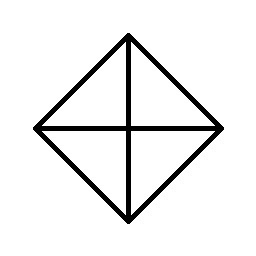반응형
설명
- 코틀린 인터페이스는 추상 멤버와 구현체를 모두 포함할 수 있다.
- abstract와의 차이점은 인터페이스 안에 상태를 저장할 수 없다.
- properties는 가질 수 있지만 abstract이거나 접근 구현체(accessor implementations)를 제공해야 한다.
interface MyInterface {
fun bar()
fun foo() {
// optional body
}
}
Properties in interfaces
- 인터페이스 안에 properties를 선언할 수 있다.
- 인터페이스 안에 선언된 property는 backing field를 가질 수 없다.
interface MyInterface {
val prop: Int // abstract
val propertyWithImplementation: String
get() = "foo"
fun foo() {
print(prop)
}
}
class Child : MyInterface {
override val prop: Int = 29
}
Interfaces Inheritance
- 인터페이스는 다른 인터페이스로부터 파생될 수 있다.
- 이러한 인터페이스를 정의하는 클래스는 오직 해당 인터페이스의 구현체를 정의하는 것을 필요로 한다.
interface Named {
val name: String
}
interface Person : Named {
val firstName: String
val lastName: String
override val name: String get() = "$firstName $lastName"
}
data class Employee(
// implementing 'name' is not required
override val firstName: String,
override val lastName: String,
val position: Position
) : Person
Resolving overriding conflicts
interface A {
fun foo() { print("A") }
fun bar()
}
interface B {
fun foo() { print("B") }
fun bar() { print("bar") }
}
class C : A {
override fun bar() { print("bar") }
}
class D : A, B {
override fun foo() {
super<A>.foo()
super<B>.foo()
}
override fun bar() {
super<B>.bar()
}
}
- 부모 interface의 타입을 정의하여 충돌을 피할 수 있다.
Kotlin Docs 번역
참고자료 :
Interfaces | Kotlin
Interfaces | Kotlin
kotlinlang.org
반응형
'Programming Language > Kotlin' 카테고리의 다른 글
| [Kotlin] Abstract class (0) | 2023.02.28 |
|---|---|
| [Kotlin] Sealed Class (0) | 2023.02.19 |
| [Koltin] Object Keyword. (싱글톤 패턴, 익명 함수) (0) | 2023.02.08 |
| [Kotlin] forEach에서 break & continue (0) | 2022.12.05 |
| [Kotlin] 진수 변환. 알고리즘. (5) | 2021.08.25 |




